“[John] Morris … has made a one-man industry of recounting the story of Capa at D-Day.” — Marie Brenner, Vanity Fair, June 2014
Indeed he has. In its original form, that “story of Capa at D-Day” at least has the virtue of simplicity, requiring only that the audience swallow whole its central premise — that the emulsion of 35mm black & white Kodak Super-XX film was susceptible to melting upon brief exposure to heat in an enclosed space.
The ignorance of the general public regarding matters that concern film processing, the dramatic appeal of the story, and the considerable professional reputations and influence of both Capa and Morris all made any challenge to the credibility of that narrative unlikely. As we have seen, between the birth of the story in 1944 and the initiation of our deconstruction thereof in 2014, only one expert — W. Eugene Smith biographer Jim Hughes — dared to question it, back in 1986, and that to no avail.
The first public version of this fabrication appeared in Capa’s own 1947 memoir, Slightly Out of Focus:
“Seven days later [June 14] I learned that the pictures I had taken on ‘Easy Red’ were the best of the invasion. But the excited darkroom assistant, while drying the negatives, had turned on too much heat and the emulsions had melted and run down before the eyes of the London office. Out of one hundred and six pictures in all, only eight [sic] were salvaged. The captions under the heat-blurred pictures read that Capa’s hands were badly shaking.”
By my reckoning, Capa’s version of this story didn’t really gain traction until the debut of the first posthumous retrospective of Capa’s work began to circulate in 1960, with the above excerpt on one of its panels. It has appeared in virtually every book about Capa published since then, as well as in general histories of photojournalism and photography.
I have to assume that just about any working photographer would have found Capa’s version of this story — which must have originated with Morris — unlikely at best. That would certainly include his colleagues at Magnum. So I don’t understand how photographers allowed this nonsense to pass unchallenged for almost 70 years.
Nonetheless, it circulated without contradiction among photographers for decades, long before the advent of the internet, and certainly reached not just others in the field, such as picture editors, but also historians, critics, curators, teachers and students of photography, and members of the medium’s growing audience. Since 1995 it has become widespread if not viral on the web, not just at general-audience sites but in online photo magazines, at photographers’ personal blogs, in photo-specific forums and listservs … in short, in places where it goes unquestioned by the very people who should know better.
I avoid the temptation of ascribing this to digital photography supplanting its analog antecedents, leaving younger practitioners inexperienced enough with film processing that they could believe anything. Many of the sites where I find versions of the Capa-Morris fable (e.g., Rangefinderforum.com) include extensive and often arcane discussion of analog photography’s tools, materials, and processes. I can only conclude that, bedazzled by the radiance of the Capa and Morris stars in photography’s firmament, all the medium’s practitioners have turned a blind eye to a narrative that a moment’s reflection must tell them couldn’t possibly have happened that way.
Saving the Appearances
In a comment on his own role in the making of the Capa D-Day myth, just published at the website iMediaEthics in response to my account of the National Press Photographers Association’s 2015 coverage of this investigation, Morris stated,
“The only thing I have changed in my story is that I became convinced that Dennis [sic] Banks was mistaken when he said that three of Capa’s four rolls of 35 mm film that he developed had been ruined by too much heat. I think we shall never know what ruined them — perhaps sea water. I know that I personally inspected them in the Life darkroom that night and threw them away as there was nothing on them — just like Dennis [sic] Banks had said.”
As I wrote in that article, “This is laughable, as our research and this article make clear. Indeed, of his elaborate original narrative describing his experience and Capa’s, reiterated almost verbatim for 70 years, only Morris’s claim to have seen three and half rolls of blank film remains intact — and now, after ascribing this first to excess heat, then to an overlooked lenscap, and then to confusion on Capa’s part, he’s blaming it on … sea water.”
In point of fact, our investigation has forced Morris to recant major portions of the myth he launched on the morning of June 8, 1944 — in B&W magazine, on CNN, in the New York Times, and elsewhere. As synopsized in the preceding post, it has also led him to fill in the resulting gaps and resolve the consequent implausibilities by concocting what he refers to as “the new theory,” a convoluted, incoherent, hasty, ill-considered patchwork of uncoordinated revisions of the original confabulation. In science they call this desperate effort to salvage a collapsing theory “saving the appearances.” (For variations on his “new theory,” see also these two dialogues with his current business partner, Robert Pledge of Contact Press Images: Luxembourg, September 9, 2014, at timestamp 18:12, and London, November 11, 2014, at timestamp 34:26.) [Postscript October 10, 2017: The video of the Luxembourg appearance appears to have vanished from the web. — A. D. C.]
The Dog Ate Capa’s Homework
With the original narrative of the darkroom disaster impeached, Morris (as detailed in my previous post) cast about for substitute justifications for his claim that he received four rolls of almost completely blank film from Capa: Capa left his lenscap on, Capa threw a handful of rolls of unexposed film into the pouch, seawater got into the canisters. One way or another, Morris remains adamant: the dog really did eat Capa’s homework.
Why does this matter so much to Morris, and to this investigation? The simple answer: If no darkroom accident destroyed Capa’s film, and no damaged or unexposed rolls came in with his shipment, then no “darkroom lad” could have told Morris (even mistakenly) that any of Capa’s negatives had been “ruined” by excessive heat. Which leaves only one explanation for that shaggy-dog tale: Morris made it up. Or, to put it less kindly: Morris lied. That he did so, initially, to protect Capa and LIFE magazine, and did it off the public record to boot, surely mitigates the offense — just as 70 years of subsequently promulgating that story worldwide aggravates it.
Boiling the Pot
Morris hardly qualifies as a doddering oldster with a fading memory whose vagaries we can excuse. Though currently hospitalized, until recently he has trundled along handily, an active and energetic senior-citizen expat in Paris with multiple irons in the fire.
 For one, there’s his current project with the picture agency Contact Press Images: a book of his own photographs of Normandy in 1944, published in several editions in several languages, accompanying an internationally touring rental exhibition thereof, with both limited and open-edition prints of the images for sale. As reported under “Limited Editions” in The Photograph Collector, April 2016, p. 12:
For one, there’s his current project with the picture agency Contact Press Images: a book of his own photographs of Normandy in 1944, published in several editions in several languages, accompanying an internationally touring rental exhibition thereof, with both limited and open-edition prints of the images for sale. As reported under “Limited Editions” in The Photograph Collector, April 2016, p. 12:
1944 – by John G. Morris – (1) limited edition portfolio (20 prints, 20″x20″ paper size) in an edition of 11: 1-3 already sold at $23,000; 4-6 at $27,500; 7-9 at $33,000; 10-11 TBD — (2) Open edition prints, signed and dated on the verso — 20″x20″ at $1,500, 30″x30″ (when the negative permits) at $2,500.
An exhibition of John Morris’s Quelque part en France (Somewhere in France), with some supplemental documents, is available for $8,500 for six to eight week exhibitions.
The 24″x24″ Museum version has been exhibited at Visa Pour L’Image, Perpignan, France; National Museum of the Battle of Normandy, Bayeux, France; a private gallery in Brest, Brittany, France; and at the Robert Capa Center for Contemporary Photography, Budapest, Hungary. The 20″x20″ Museum version has been exhibited at the International Center of Photography (ICP), New York City, and Clair Fontaine Gallery, Luxembourg. A special outdoor show of 6’x6′ prints, which are no longer available, was exhibited at La Gacilly, Brittany, and in the Rennes Town Square, in the regional capitol of Brittany.
(3) Museum Portfolio Set (40 prints) — all prints signed, numbered, and dated on the verso — one 24″x24″ set at $60,000, two 20″x20″ sets at $42,000 — for further information on the portfolio or exhibition, contact Jeffrey D. Smith, Executive Director, Contact Press Images, 341 West 38th Street, 7th fl., New York, NY 10018, (212) 695-7750, fax: (212) 695-8297, jeffreysmith@contactpressimages.com, www.contactpressimages.com.
So, in partnership with Contact Press Images and its director, Robert Pledge, Morris has turned his dozen rolls of 2-1/4″ 120 film from July-August 1944 into a business enterprise whose gross I calculate (conservatively) at $500K. Possibly more than Robert Capa made from photography in his whole life. Not too shabby. For a video of Robert Pledge discussing the production of the John Morris book, exhibition, and limited-edition portfolio project at the American Photography Archives Group (APAG) Seminar 2014, click here.
And you can watch Pledge and Morris taking their dog-and-pony show for this project on the road in this video of a November 11, 2014 dialogue held at the Frontline Club in London. (“I call him Sir John,” Pledge says at timestamp 1:22, to which bootlicking Morris makes no objection.) This took place just prior to or just after Morris confessed to Christiane Amanpour on CNN that Capa may never have made more than the handful of Omaha Beach images of which tangible evidence survives.
(I should add that every photographer at Contact Press Images, along with director Pledge, knows that the emulsion of black & white film doesn’t melt in film-drying cabinets.)
His Century
Meanwhile, also on the business front, Morris has begun soliciting money to support publication of a 600-page illustrated book on which he’s worked for some years, titled “My Century.” Instead of a Kickstarter campaign, with pledges returned if the stated goal goes unmet, Morris has opted for a straightforward request for direct, non-returnable donations of funds. His only commitment, if and when the book materializes: “Contributors of €500 or more will receive a copy of My Century upon its publication,” according to the project’s website. [Postscript, October 15, 2017: 500 euros equals roughly 600 USD. Despite the fact that Morris’s death on July 28, 2017 leaves this project very much in limbo, the solicitation for non-refundable, non-deductible donations — which presumably now go to his heirs and assigns — remains online. — A. D. C.]
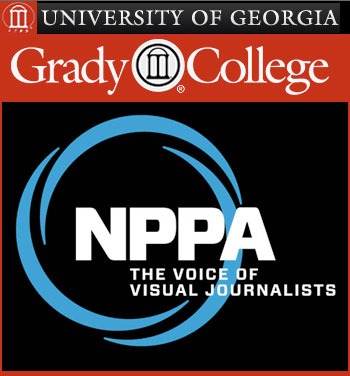 “This isn’t a typical autobiography or a typical illustrated history book,” Morris writes. “[I]t is a very personal look inside the world of photojournalism, beginning in the days before there was a TV in every living room, the days when people bought Life magazine to see the news. It continues through my years at Ladies’ Home Journal, Magnum, The Washington Post, The New York Times and National Geographic.”
“This isn’t a typical autobiography or a typical illustrated history book,” Morris writes. “[I]t is a very personal look inside the world of photojournalism, beginning in the days before there was a TV in every living room, the days when people bought Life magazine to see the news. It continues through my years at Ladies’ Home Journal, Magnum, The Washington Post, The New York Times and National Geographic.”
Unlikely that Morris has deep new insights into “his century” that he elected to withhold from his 1998 memoir, Get the Picture. Sounds to me like a lavishly illustrated version of that earlier book — an extravaganza for which no known demand exists. In any case, surely his share of the windfall profits from the “Somewhere in France” product line described above should suffice to finance this expensive monument to himself and eliminate the need for such requests for subsidy, especially for a project with no assurance of completion, much less publication. (According to her bio at her website, Anne Spiller, who has worked with Morris on this venture, “is the Principal Collaborator and Main Editorial Contributor of the ‘My Century – John G. Morris’ Project.” Caps in the original.)
Morris’s good friend Donald Winslow, then editor of the journal and website of the National Press Photographers Association (NPPA), lent his support to the fundraising effort with a post at his own Facebook page:
And Winslow went the extra mile by publishing at the NPPA website an April 12, 2016 article by Morris titled “Help Support A New Book From John G. Morris.” In it Morris appeals for direct donations from the NPPA’s membership to underwrite the production of this lavish tome. (NPPA members do not automatically receive such opportunity to publicize and request funds for their projects; this represents a special favor.)
•
I would remind those who think I behave badly in holding a centenarian accountable for events that occurred more than seven decades ago that John Morris didn’t hesitate to encourage the National Press Photographers Association to come to the defense of his reputation, even though that involved said organization in committing multiple fundamental breaches of professional ethics, as confirmed by the report published recently at iMediaEthics. Remember too that he did so in a way that implicated the organization’s 6500+ members.
No mean feat, that bespeaks considerable professional clout and extremely effective networking, along with the willingness to exercise those amorally for self-serving purposes. Certainly not the behavior of the kindly, selfless senior figure that Morris presents as his public face.
The very respect and politesse with which journalists and others over the years have approached the principals in the making of the Capa D-Day myth (Morris and Cornell Capa, primarily) inevitably inhibited them. The close collegial relationships and personal friendships with Morris developed by such figures as Winslow and LIFE historian John Loengard fatally compromised them, making it impossible for them to ask tough questions, or even to think of them. So, like little children visiting a beloved elder, they have all simply made the same request over and over: “Grandpa, tell us the Robert Capa D-Day story again!” And Grandpa has obliged, of course, word for word, just the way they like it, since they all know it by heart.
I can say without boasting that by now I have probably watched and listened to (as video and/or audio files) and read more of Morris’s tellings of this tale than anyone, perhaps including Morris himself. Dozens and dozens of repetitions. Say the words “Capa D-Day” and, for decades, Morris would go on autopilot. (This was true as recently as September 4, 2014, the date of an online video made for the archives of the Overseas Press Club of America, starting at timestamp 15:30.) And I have read almost two hundred second-hand rote reiterations of that narrative by others simply parroting the received versions as told by Capa, by Morris, or by both.
So it became necessary to interrupt that pattern. Interruption is by its nature rude. But, precisely because its disrespect comes as a shock, such an intervention can force its target to stop repeating the rehearsed answer, to offer new bits of information that begin to transmute the practiced narrative.
To those who find my voice and tone abrasive, and who take offense at my less than reverential treatment of Morris and others, I would respond that it has resulted in Morris making drastic revisions to — indeed, an almost complete recantation of — the story he had told for the previous 70 years. I would also suggest that this happened precisely because of, not in spite of, the approach I chose.
I don’t mean to imply that this constitutes simply a calculated performance on my part. However innocently it may have begun, as an act of loyalty and self-preservation never intended for public consumption, the Capa D-Day myth has gone viral. As I think our team has proven, much of it is false. So we have been lied to for all these years, by powerful people and institutions who claim telling the truth to the world as their purpose but who have profited in many ways from the deception. That makes me angry. And I have let that anger, modulated, energize my writing and show therein.
If, as we are regularly encouraged to do, we pay heed to the lives and works of Robert Capa and John Morris, then, in the spirit of the field of journalism in which they both worked and to which they declared their commitment, we should do so “warts and all.” The fabrication of their D-Day myth has a prominent place among those blemishes.
•
“It is our knowledge — the things we are sure of — that makes the world go wrong and keeps us from seeing and learning.” — Lincoln Steffens
•
(For an index of links to all posts in this series, click here.)
•
This post supported by a donation from photographer Fabricio Santos.
•
 Special offer: If you want me to either continue pursuing a particular subject or give you a break and (for one post) write on a topic — my choice — other than the current main story, make a donation of $50 via the PayPal widget below, indicating your preference in a note accompanying your donation. I’ll credit you as that new post’s sponsor, and link to a website of your choosing. Include a note with your snail-mail address (or email it to me separately) for a free signed copy of my 1995 book Critical Focus!
Special offer: If you want me to either continue pursuing a particular subject or give you a break and (for one post) write on a topic — my choice — other than the current main story, make a donation of $50 via the PayPal widget below, indicating your preference in a note accompanying your donation. I’ll credit you as that new post’s sponsor, and link to a website of your choosing. Include a note with your snail-mail address (or email it to me separately) for a free signed copy of my 1995 book Critical Focus!
 Donate now and I’ll include a copy of The Silent Strength of Liu Xia, the catalog of the 2012-13 touring exhibition of photos by the dissident Chinese photographer, artist, and poet, currently in her sixth year of extralegal house arrest in Beijing. The only publication of her photographic work, it includes all 26 images in the exhibition, plus another 14 from the same series, along with essays by Guy Sorman, Andrew Nathan, and Cui Weiping, professor at the Beijing Film Academy.
Donate now and I’ll include a copy of The Silent Strength of Liu Xia, the catalog of the 2012-13 touring exhibition of photos by the dissident Chinese photographer, artist, and poet, currently in her sixth year of extralegal house arrest in Beijing. The only publication of her photographic work, it includes all 26 images in the exhibition, plus another 14 from the same series, along with essays by Guy Sorman, Andrew Nathan, and Cui Weiping, professor at the Beijing Film Academy.



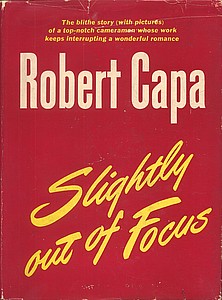
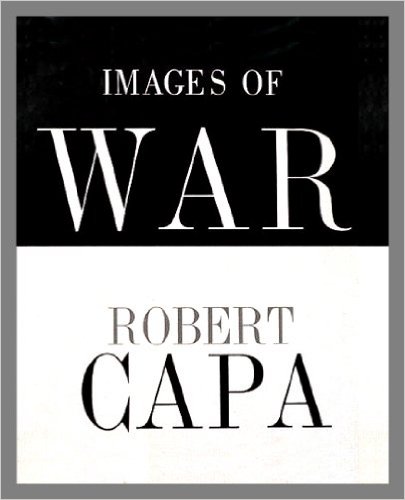
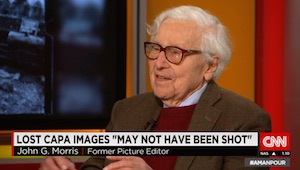
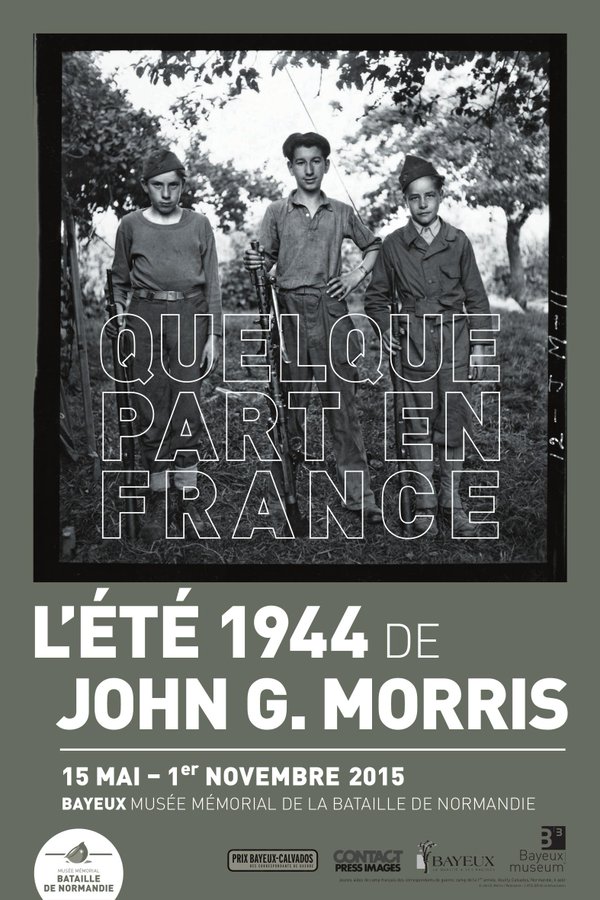

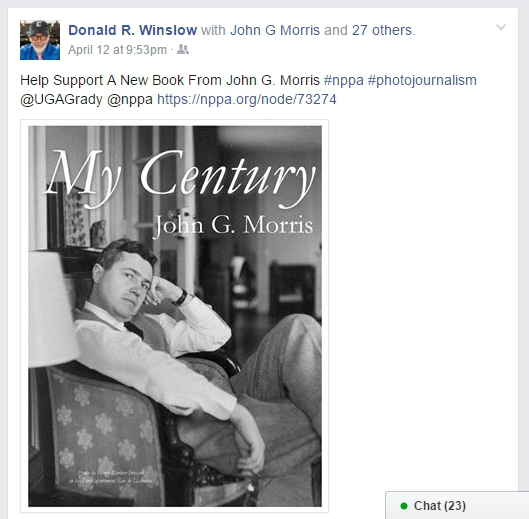
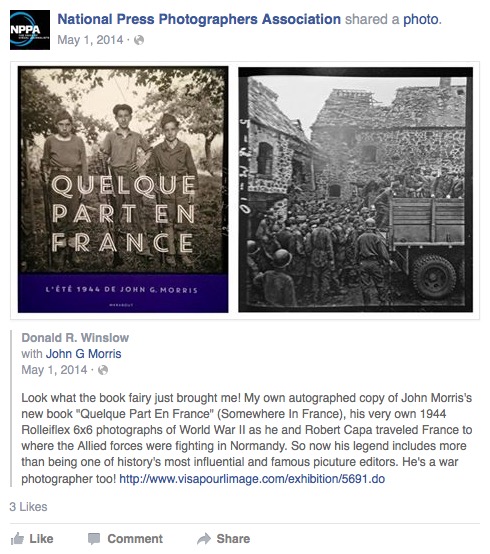
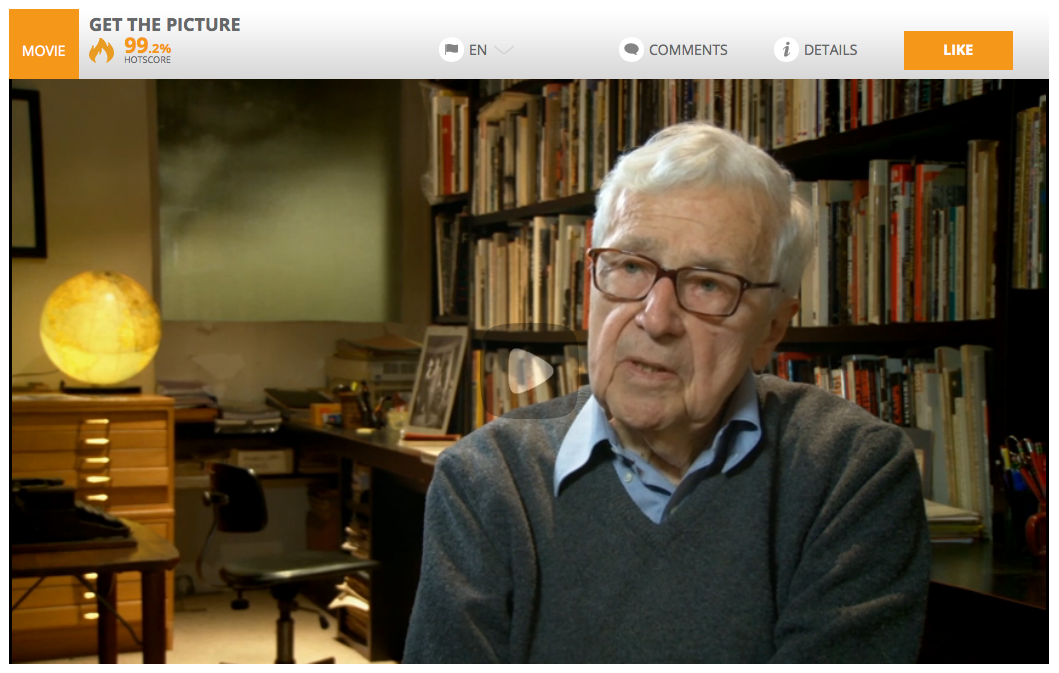




Leave a Comment